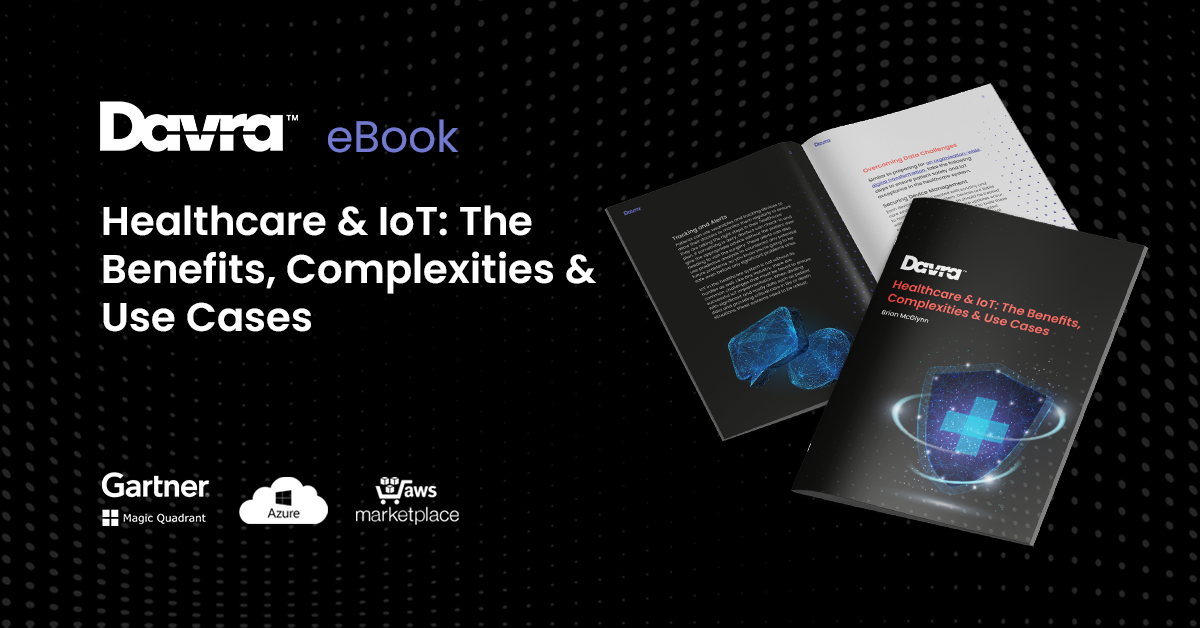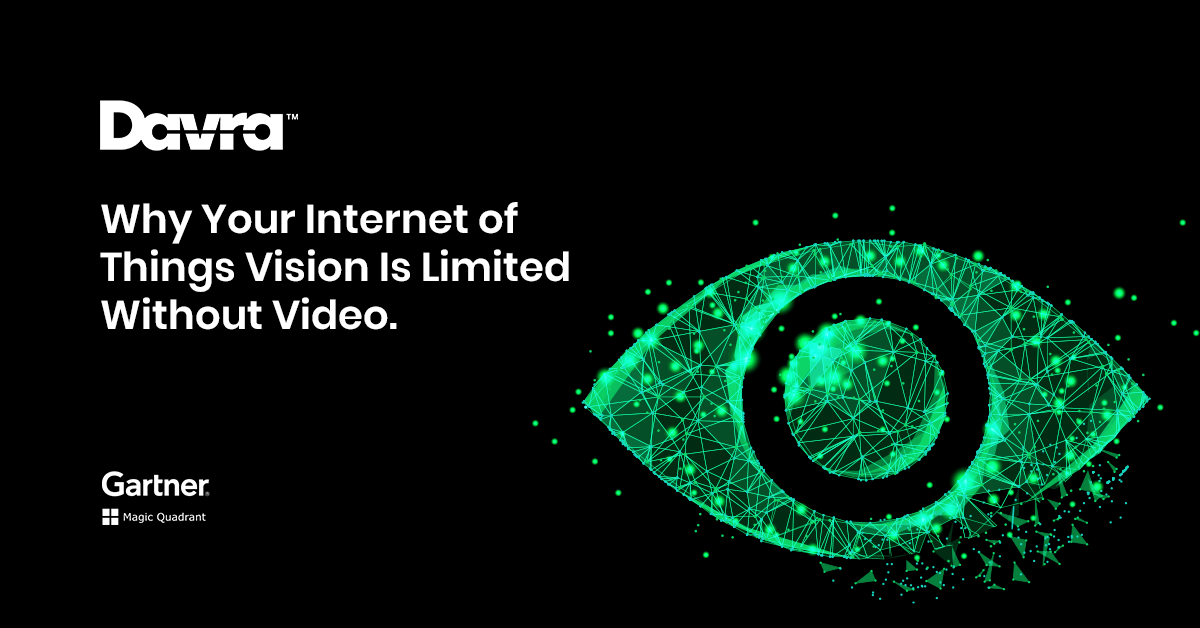IoT in Healthcare Use Cases eBook
Download Your Free IoT in Healthcare Use Cases eBook
Read More


Does your Internet of Things implementation boast outstanding utility, or do its perceptual limitations leave you woefully underinformed? Looking at what’s in your sensor stack might clarify things by showing you what you’ve been missing in your IoT: high-quality video data.
Why are videos so important to the IoT? Here’s why Davra’s engineering team thinks visual sensors are among the most critical elements of a fruitful connected ecosystem.
The infamous Allegory of the Cave from Plato’s Republic describes how a prisoner chained in a cave sits with their back to a large fire. Although the poor captive can’t turn their head to the side or move, they can see the flickering silhouettes cast by the flames licking at their rear. In other words, their entire concept of the 3-dimensional universe, including themselves, is restricted to flattened, shadowy projections.
Smart observers might point out parallels between this loss of depth and modern Internet of Things implementations. Although distributed computing networks exist in and have access to our physical world, their perception of it is limited by bandwidth and hardware. Much like Plato’s mortal prisoners, they can’t simply get up and walk out of the cavern or adjust their frame of reference to enjoy fuller perspectives.
Of course, your IoT platform isn’t chained to some dark hole in the ground, and it probably shouldn’t be next to a roaring open fire. The idea that limiting your senses also constrains your experience of the world, however, is reflected in many areas of business, including distributed computing.
In the allegory, the prisoners could only make use of their sight. In the world of concrete IoT implementations, however, this sense is often left out — much to the detriment of the enterprises that overlook it.
One-dimensional sensors, such as thermometers, ammeters and airflow detectors, serve vital roles in the IoT, but they’re only part of the story. Without the proper context, they can only paint partial pictures of the whole scene, so they need to be combined with alternatives that reveal data in enhanced depth.
Visual sensors inherently add dimensionality to information. On top of creating images in 2D, IP cameras, color detectors and other advanced sensor hardware can help users contextualize linear data streams:
Imagine that you’re running a factory in an arid locale. You’d prefer to prevent the machinery from getting too hot and catching fire. Due to the blazing climate, however, things tend to run a bit warmer than normal, so you keep on having to visit the production line personally to confirm that disasters aren’t happening.
Adding infrared cameras to your IoT might make it easier to learn from feedback at a glance. Even without looking at the camera stream, you could configure your IoT implementation to automatically overlook transient high-temperature events unless they were accompanied by visual evidence. Or, you might program the system to give you warnings at other signs of trouble, such as when friction hotspots develop in poorly maintained machinery.
Many sensors, like thermometers and vibration detectors, need to be close to their observation targets to work. This isn’t always possible in industrial, retail, municipal and other settings, however. Installing sensors right next to the main event might even place some IoT hardware at an increased risk of damage or failure.
Videos let you absorb the action on stage without getting caught up in the scenery. Since you can watch from a distance sans interference, it’s also possible to develop a purer baseline for what constitutes normal operations or behaviors.
According to neuroscientists, human brains only need milliseconds to process the images their eyes see. Our speedy perception may partially explain the widespread prevalence of visuals in the world of data science.
Including streaming videos in your IoT dashboard output could help your users make sense of what they’re observing faster. Even better, IoT systems excel at performing advanced tricks, such as only displaying data when a camera detects motion, filtering signal noise or automatically focusing on points of interest. Such capabilities make it easier to use one of humanity’s favorite physical senses to further specific business goals.
One-dimensional and linear data streams aren’t well-suited to solving certain types of problems. For instance, a McKinsey Global Institute analysis found that when it came to objectives like improving employee productivity, ensuring maintenance quality and maintaining public safety, video-analytics solutions reigned supreme. IoT systems that included visual feedback were also found to be better at making sophisticated choices and delivering enhanced business value.
Consider a modern vehicle manufacturing line. Although proximity detectors might tell a robotic arm when it gets too close to the bounds of its work zone, they can’t ensure that it makes good spot welds or assembles parts correctly in blind spots. Adding cameras would be a simple way to make the factory more productive and improve output.
Videos elucidate details that other sensors might miss. For example, in a retail setting, IoT installations that visually recognize objects from multiple profiles might aid in loss prevention. Whereas an RFID anti-theft system might tell you that a given retail item was stolen, cameras help you associate people, times and specific locations with such events. They also make it simpler to recognize offenders and prevent repeat incidents.
The multidimensionality of videos also makes sense in real-world applications where you don’t control the environment. Suppose that you were mapping a precision farming installation using drones. Computer vision solutions from companies like Intel could help you detect landscape features, gauge plant health noninvasively and even track growth patterns throughout the season — all without having to get dirt under your fingernails.
One hallmark of video-analytics IoT apps is that they’re more versatile. Systems that intelligently determine what data means instead of simply reporting it back to their overseers prove superior at responding to unknowns and adapting to modifications. By using visual sensors that can be installed anywhere, they massively expand your perception.
How does your IIoT use sensors to quantify the world? Are your applications stuck in some dank grotto, chasing shadows instead of illuminating their sources? Bring enhanced clarity to your workflows, systems and practices by upgrading to an IoT platform that integrates with videos seamlessly. Take a look at Davra to see how it can broaden your field of view.
Brian McGlynn, Davra, COO
Download Your Free IoT in Healthcare Use Cases eBook

Davra IoT is the only Industrial IoT Platform Available on AWS Marketplace
Read MoreThe Collaboration of Humans & Robots Has Created The Cobot
Read More